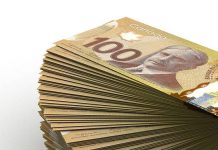- European equities eked out modest to moderate gains, with the exception of Madrid that trades flat ahead of the referendum. US equities open little changed.
- Eurozone inflation rose by 1.5% Y/Y in September, unchanged from August and slightly below expectations. Core inflation surprised on the downside slowing to 1.1% Y/Y from 1.2% Y/Y. The outcome makes it slightly harder for the ECB to wind down its bond buying programme, but we don’t expect a further delay.
- German unemployment slid to a record low in September in a sign that Europe’s largest economy will continue to expand on the back of domestic spending. The jobless rate dropped to 5.6%, down from 5.7% in August. Number of jobless fell by a SA 23,000 to 2.506 million, beating the median estimate for a drop of 5,000.
- The UK economy expanded at a weaker 1.5% Y/Y pace in Q2 than the 1.7% Y/Y estimated before. The figures highlight the "notable slowdown" in growth in H1. It was the slowest growth pace since 2013.
- EC president Juncker has ruled out any chance that EU leaders will decide next month to unlock the next stage in Brexit talks. "By the end of October we will not have sufficient progress," he said, adding that "miracles" would need to happen to change this. However, he admitted that negotiations are making progress.
- BOE president Mark Carney confirmed that the BOE is close to raising interest rates at its November meeting, saying that they would rise so long as there was not a sudden and unexpected deterioration in economic data.
Rates
Bund corrects further up, but US Treasuries stall
Core bonds’ upward correction resumed in early European dealings and bonds managed to hold on to marginal, (US), respectively modest (German) gains. We think that after the sharp sell-off for the best part of September, core bonds were ripe for an upward correction and that started in fact yesterday. Early EMU data releases were mixed with strong German labour market data on the one hand and weak German retail sales and weak French consumer spending on the other hand. The rise of Bunds coincided with falling equities and a rising EUR/USD, but when equities turned north, it didn’t affect Bunds. The Bund made a last minor move higher on the weaker-than-expected EMU headline and core inflation. We don’t expect it to have much impact on the ECB decision on asset purchases when they meet at the end of October. Bunds moved sideways shortly after the initial reaction and continued to go so till the closing of our report. The US Treasuries lagged Bunds on their way higher (effectively moving sideways throughout the session), but rose sluggishly to new minor intra-day highs after the release of slightly lower-than-expected US PCE deflators. However, US Treasuries traded soon lower again, little changed on the day. The US personal spending and income data were weak, but as expected.
At the time of writing, the German curve bull flattens with yields down 0.2 bp (2-yr) to 3 bps (30-yr). US yields are flat (2-yr) to 0.9 bp (10-yr) lower. The outperformance of German bonds is partly explained by catching up after strength of US Treasuries yesterday eve. In the intra-EMU bond market, 10-year yield spreads were little changed (between -1 and +2 bps). Spanish bonds only marginally underperformed despite Sunday’s disputed Catalonian referendum and the increased tensions surrounding it. The risks of a Catalonian secession are small, but we would have expected some spread widening as it should be considered as a non-negligible tail risk. Markets are maybe a bit too sanguine.
Currencies
USD returns part of this week’s gains.
Yesterday, the recent rise in core yields and in the dollar ran into resistance. Additional profit taking occurred today. Soft price data (in the US and the EMU) weighted more on the dollar than on the euro. EUR/USD tries to regain the previous range bottom at 1.1823. The loss of USD/JPY remains modest (112.30 area).
Asian equity markets ex-Japan traded in positive territory. Activity slowed as several markets including China prepared for holidays next week. Japan hovered around yesterday’s closing level. Japanese eco data were mixed (see headlines). They gave the BOJ every reason to maintain its very loose monetary policy. The yen lost a few ticks after the data. USD/JPY traded in the 112.60 going into the start of European dealings. EUR/USD stabilized in the 1.1775 area.
Yesterday, the rise in US yields and in the dollar stalled and a modest countermove started as the was ‘no strong enough’ US news to extend the uptrend. This pattern continued today. From the start in Europe, the dollar lost gradually further ground. One might call it end of week profit taking even as the profit recent dollar profits still aren’t that spectacular. Whatever, EUR/USD returned north of 1.18. USD/JPY drifted lower in the 112 big figure. EMU inflation (headline and core) both printed slightly softer than expected. The CPI release caused a temporary pause in the EUR/USD rebound, but the intraday trend resumed soon. Interest rates declined slightly more in Europe than in the US but differentials were too small to be significant for EUR/USD trading.
US spending and income data were weak as signalled by the retail sales data earlier this month. The PCE deflators were even a touch softer than expected at 1.4% Y/Y for the headline figure and 1.3% for the core. This is well off the Fed’s 2% target. US yields and the dollar lost a few more ticks after the publication. EUR/USD is again testing the 1.1823 previous range bottom. A close above this level would be a disappointing for USD bulls. The losses in USD/JPY are modest. The pair is trading in the 112.40 area.
Is EUR/GBP bottoming out?
There were plenty of eco data in the UK today. Indicators showed a mixed picture but markets focused on two negative topics. UK Q2 growth was confirmed at 0.3% Q/Q but the Y/Y figure was reduced from 1.7% Y/Y to 1.5% Y/Y due to downward revision in Q3 and Q4 of 2016. The good post-Brexit performance of the UK economy was a bit good than assumed until now. At same time, output growth in the key UK services sector even declined 0.2% M/M in July. Sterling already felt some headwinds in the run-up to the data and the move accelerated afterwards. EUR/GBP extended its rebound north of 0.88. Admittedly, part of this move mirrored an overall rise of the euro. BoE’s Carney in an interview indicated the BoE still intends a rate hike in the coming months. However, the rate hike talk was of little help for sterling anymore. EUR/GBP trades currently in the 0.8835 area. The pair is moving further away from the recent lows and from the 0.8742 support. A bottoming out process is developing. Cable dropped (temporary?) below the 1.34 mark, but the decline was retarded by a generally softer dollar. The pair trades again near the big figure.











